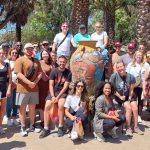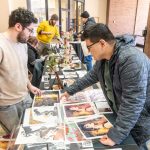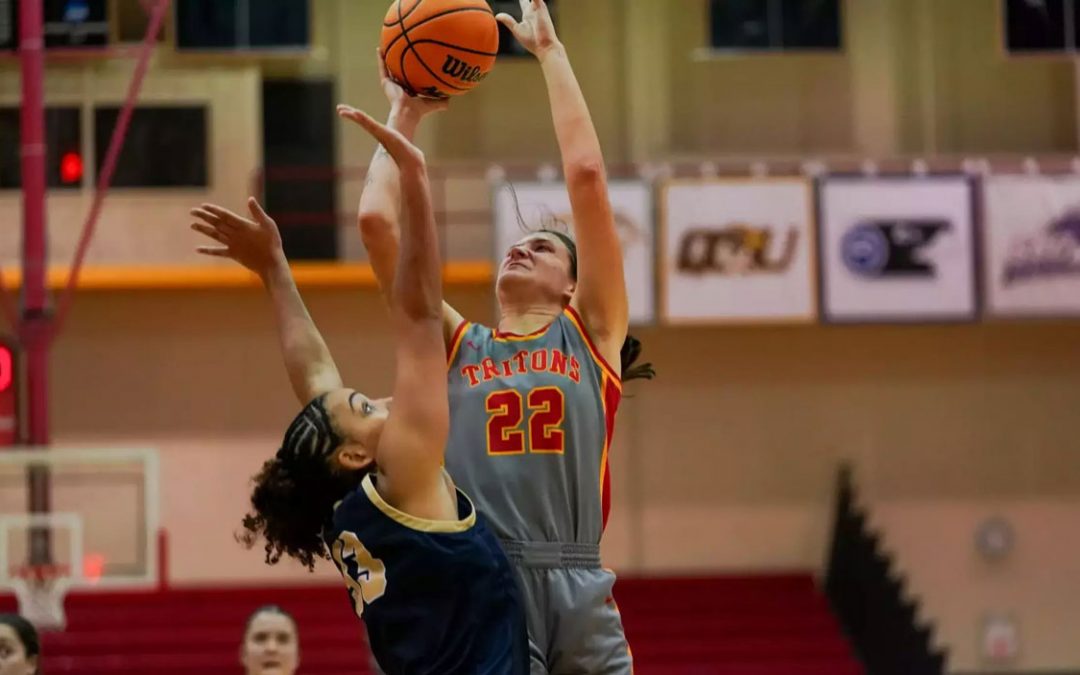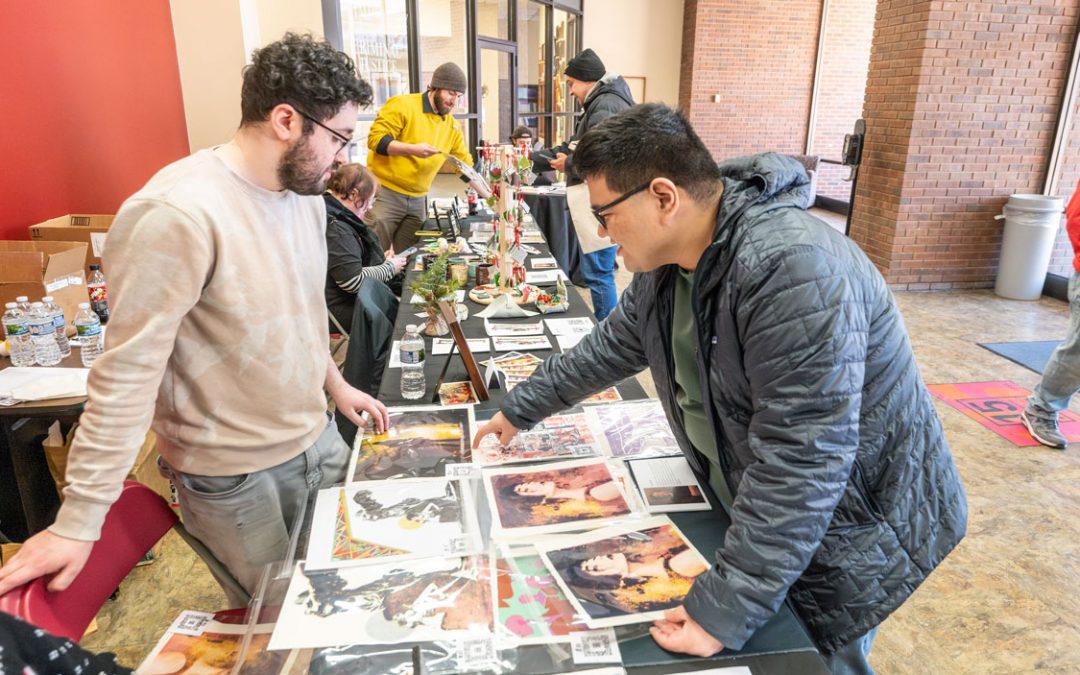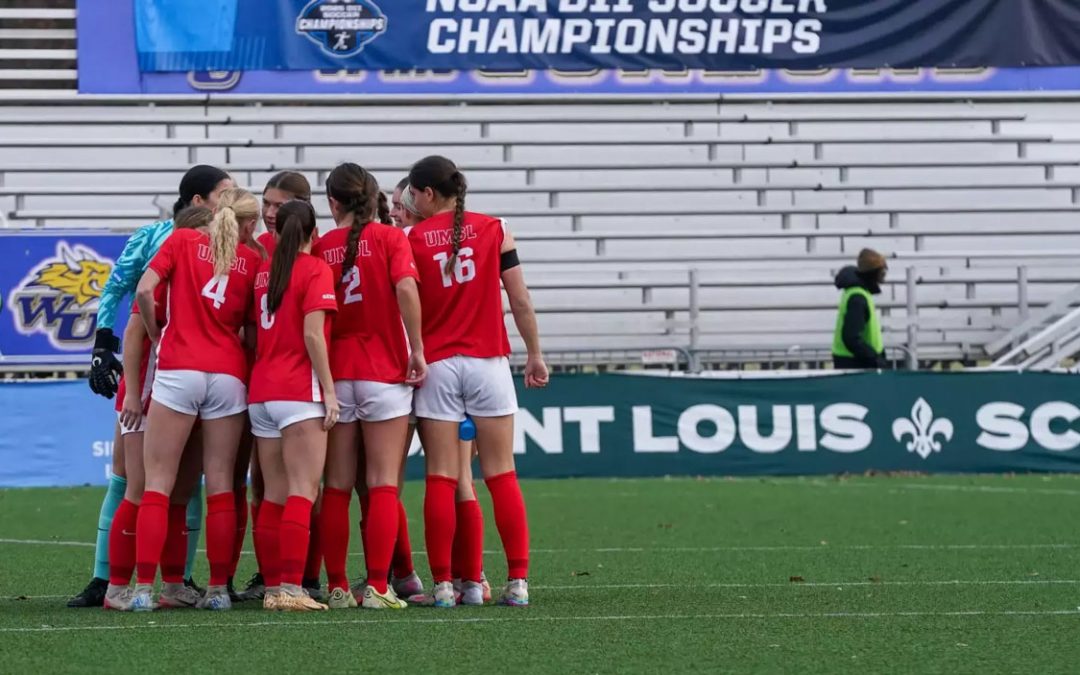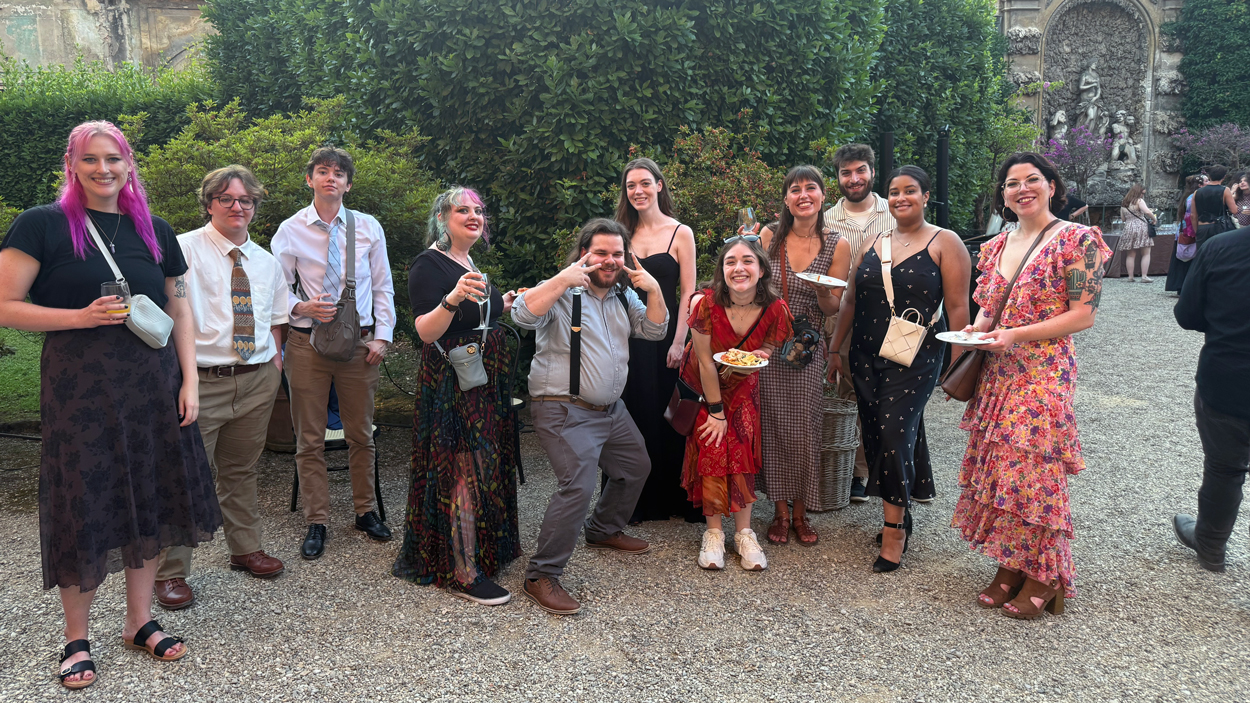
UMSL students (from left) Emily White, Tyler Winter, River Meise, Liney Ward, Sean Holley, Mae Keeley, Emily Hardin, Kelsea Miann, Matt Altis, Keaton Swarthout spent four weeks in Florence, Italy, as part of a new study abroad program led by Jodi Kolpakov (pink dress) and Maureen Quigley. They used the city as inspiration to create 8-bit style video games. (Photo by Maureen Quigley)
The simple title screen reads, “Becoming: Lessons In Art.”
The next screen comes alive, and players are transported to Florence, Italy, where they see what is unmistakably the Duomo di Firenze – the city’s famed domed Gothic cathedral – though it’s rendered in 8-bit graphics reminiscent of the original Nintendo Entertainment System.
Players take control of a character that is little more than a handful of pixels and explore the city, meeting an underappreciated artist who continues to paint anyway, a forlorn florist and a black cat unbothered by the surrounding hustle and bustle. Venturing away from the Duomo, the character stumbles upon famous works of art – comprised of sprites rather than paint or marble.

Kelsea Miann’s video game Becoming depicts Florence, Italy, including the famous Duomo di Firenze.
“There’s obviously a silent narrative going on where you aren’t really told much about the main character,” said Kelsea Miann, the creator of the video game. “You’re encouraged to basically just be, to listen to what people have to say, to observe and see what you can learn from life around you.”
Miann, an art education major at the University of Missouri–St. Louis, developed the game this summer as part of a new, innovative study abroad program offered through UMSL Global and the Department of Art and Design. She and nine other UMSL students traveled to Florence, Italy, as part of the four-week “Italy: Art History through Games and Game Arts” program led by Teaching Professor Maureen Quigley and Assistant Professor Jodi Kolpakov.
The students earned six credit hours for two classes, one with Quigley and one with Kolpakov, which integrated lessons about art, history and game design. Ultimately, they leveraged what they learned, as well as their own experiences in Florence, to create an analog game and a video game. Each game was as distinct as the students themselves.
“They really came up with some unique narratives and unique takes on how to do the games,” Kolpakov said. “They’re all very different from one another, which I thought was cool.”
Game on
UMSL offered the program for the first time this summer, but it had been years in the making. For more than a decade, faculty members in the Department of Art and Design, including Quigley, have participated in teaching exchanges with the Santa Reparata International School of Art in Florence. Quigley has also taught a course on game design and theory since 2020.
“There’s this huge movement in history scholarship of either using or designing games,” Quigley said.
Several faculty members on campus use games in their classrooms, but Quigley has gone further, publishing a game on her research in 14th-century art history. She is also currently pursuing a Graduate Certificate in Serious Games and Simulations at the University of Missouri–Columbia.
The foundation for the trip was established, but the inspiration to combine Italy and game design came by way of Assassin’s Creed II. Quigley is a gamer and had played the blockbuster action-adventure game set in 15th-century Renaissance Italy. It was acclaimed not only for its gameplay but also for its accuracy in depicting Italian cities such as Florence and Venice. She wondered if that could be done on a smaller scale.
Quigley began putting the pieces of the puzzle together in 2023 after her terms as chair of the Department of Art and Design. When Kolpakov later joined the department, Quigley enlisted her expertise in animation and 3D modeling. The pair then began to advertise the new program.
Kolpakov’s efforts convinced Matt Altis, a studio art major, to join the trip. Meanwhile, Miann saw a flyer about it on campus and mentioned it to Evan Smith, an adjunct faculty member, who encouraged her to apply.
“I was like, ‘I’d really love to go and dig in,’” Miann said. “Then I started thinking, too, how fun that would be to introduce game mechanics as an educator and use games as a way to teach.”
A link to the past
Altis and Miann had both traveled internationally before, but this summer was the first time either participated in an UMSL study abroad program. Both aimed to make the most of their time in Italy. Miann even arrived 10 days early to tour other parts of the country, including the Amalfi Coast, Naples and Rome.
During the four-week program, students traversed virtually every neighborhood in Florence. They immersed themselves in the local culture and found meaning in their surroundings. Altis saw the layers of history in landmarks such as the Ponte Vecchio, the city’s famed covered bridge, and the Palazzo Pitti, a vast renaissance palace. But he was just as awed walking to class at the Santa Reparata International School of Art.
“I think about the walk to campus every morning,” Altis recalled. “It was just incredible. I’d be walking through this historic city, and there would be these famous works. I’d be like, ‘Oh, I’ve seen that in every art textbook I’ve ever read.’”
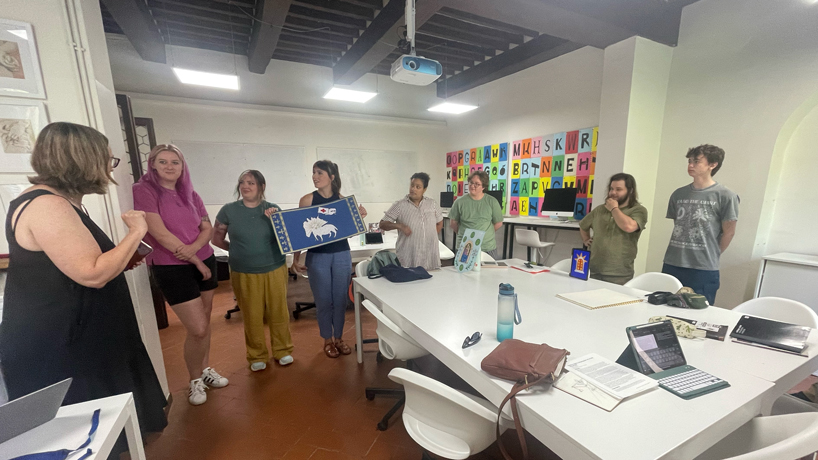
UMSL students listen intently to Maureen Quigley (far left) during class. (Photo by Jodi Kolpakov)
Miann was captivated by the Duomo di Firenze, completed in 1436, which is virtually omnipresent from every corner of the city. Several mornings, she walked to the Piazzale Michelangelo, a public square on a hill, to take in a panoramic view of the city.
“You can see everything below, so that was really amazing,” she said. “The Duomo is put to scale with the rest of the city when you see it from afar. You realize how amazing that building was for the time period it was built.”
But the program consisted of more than sightseeing. Students spent two hours each morning in Quigley’s class, where she employed a method of teaching called “Reacting to the Past.” The approach uses role-playing games to engage with history, so, ideally, students gain greater context for certain historical periods or events. They supplemented that historical knowledge with on-site art reflections – sketches and notes about the city’s architecture to inform the creation of their games.
“They were connecting with what it meant to be a working artist living in Italy 400 years ago, and they were able to apply it to their own professional practices now,” Quigley explained.
In the afternoons, the students spent two hours with Kolpakov.
“They would take what they learned in Maureen’s class, and then they had to build a game based on some sort of Italian influence,” Kolpakov said. “It was open to however they wanted to interpret that.”
Ready player one
Students spent the first two weeks researching and developing concept art for their video games. During the second half of the program, they began building their games with Bitsy, a simple coding program.
With her game Becoming, Miann wanted to convey the idea that it’s alright to be a work in progress. She drew from her personal experience of feeling a bit behind in life but also found inspiration in Michelangelo’s David sculpture. While visiting the exhibit at the Galleria dell’Accademia di Firenze, she took note of the half-carved blocks of marble leading to the epitome of the form, David.
“That’s what you see as you’re led up to the David statue,” she said. “I really wanted to play with this idea that we’re in the process of becoming. What’s really cool is you can see Michelangelo’s mark on one of the stones. So, he saw something special in these stones, and yet he left them as they were unfinished.”
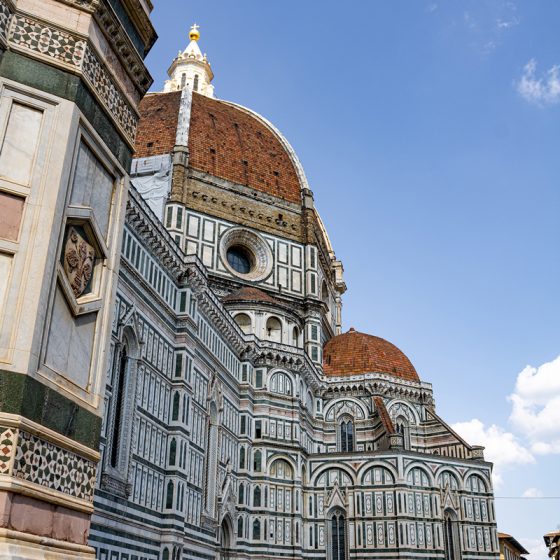
The Duomo di Firenze, also know as the Cattedrale di Santa Maria del Fiore, took more than 140 years to complete construction. (Photo by Matt Altis)
While Miann’s game was a meditation on personal acceptance and growth, Altis focused on the cycles or birth, death and rebirth in ancient cities like Florence with his game, For the Birds. The player controls an unassuming bird who experiences a cataclysmic event, escapes upward through the ruins of the city and then is reborn.
“I was thinking a lot about the layers of history,” Altis said. “Things will wash away, reform and build on top of each other and have this mounting downward pressure, this flow. I wanted to capture that idea of rulers and societies. As these things push down, there are those who fall by the wayside.”
Most of the students were unfamiliar with coding, and there were challenges developing the games, from constraints on dialogue to translating famous works of art like Sandro Botticelli’s “Primavera” into 8-bit graphics. However, the students enjoyed the process.
“We would bump into the walls a lot,” Altis said. “We really want to do this one thing, but we don’t know how to get there. It was always the game of finding the creative solution, so we can still do what we wanted – but get it to work in Bitsy.”
During the trip, Miann did the best she could to take the advice of her own game and see what she could learn from life around her in Florence.
“I feel incredibly lucky,” Miann said. “I feel so much gratitude for being at this stage in life and being able to feel like I can just fully enjoy things. Every moment, I did my best at trying to be as present as possible and build as many memories. I really got to interact a lot with my teachers and my classmates, and we got to hang out together. It was just such a special time. I’m very grateful.”



